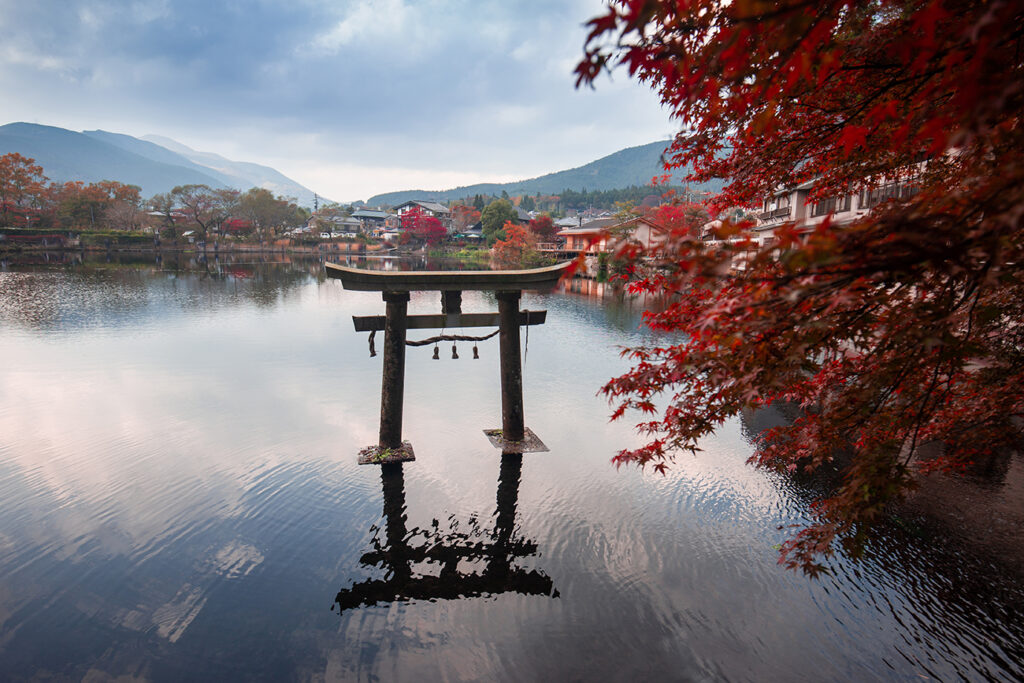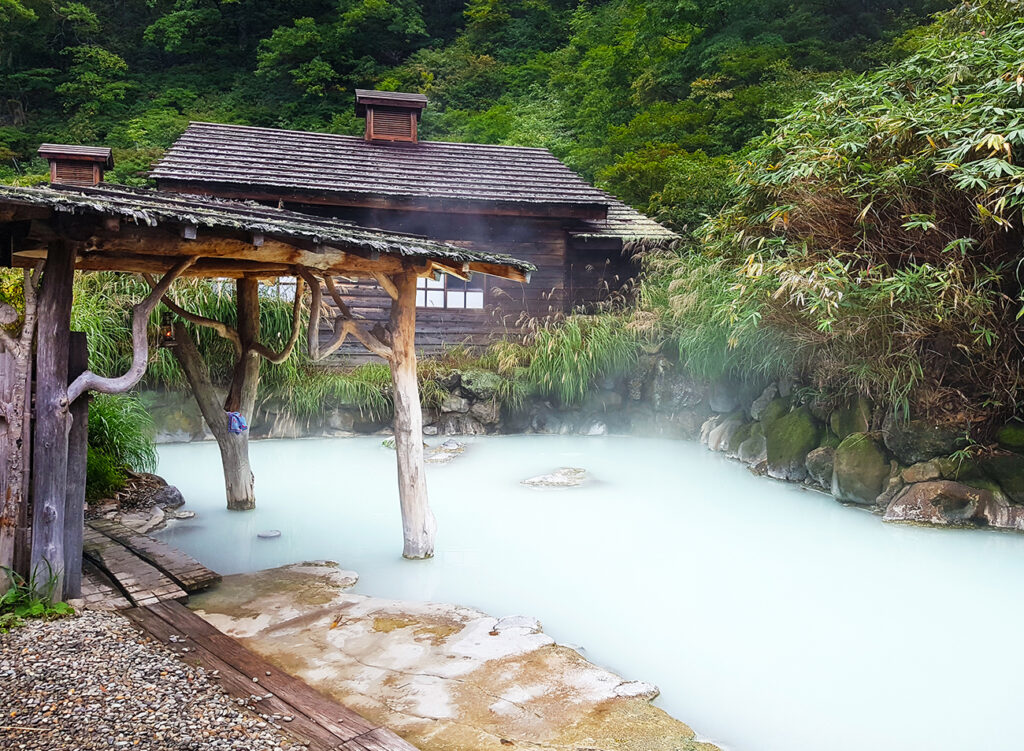
Onsen 101
Japan is made up of nearly 7,000 islands, with over 70% of the land covered by mountains and more than 200 volcanoes. Onsen, or hot springs, are found throughout the country, including all major cities. These hot springs can be either indoors (noten-buro) or outdoors (uchiyu) and may be managed by municipalities or operated privately as part of traditional Japanese inns (ryokan), hotels, or bed and breakfasts (minshuku). While historically built outdoors, there has been a trend towards more indoor onsen in recent years. The naturally, geothermally heated spring water is believed to have healing properties due to its mineral content.

Kinrin lake in Yufuin town , Kyushu region of Japan Yufuin is a popular Onsen resort in Kyushu, Japan.
Onsen in Japanese History
Japan’s onsen culture dates back to ancient times, as documented in the Nihon Shoki (日本書紀), “The Chronicles of Japan,” completed in 720 CE under the supervision of Prince Toneri, with assistance from Ō no Yasumaro. This text mentions onsen such as Arima, Shirahama, and Dogo. Notably, the Nishiyama Onsen Keiunkan, officially recognized by the Guinness World Records as the world’s oldest hotel in 2011, dates back to 705 CE. Located at the foot of the South Japanese Alps in Hayakawa, Yamanashi Prefecture, the Keiunkan Inn has been in operation for over 1,300 years since its founding by Fujiwara Mahito.
Onsen and Religious Ties
Shintoism, Japan’s indigenous religion, emphasizes the divinity of nature, and purifying hands and mouth with holy water is a common practice. Water has long been considered a divine substance. With the arrival of Buddhism in the 6th century, bathing was promoted as a way to prevent disease and bring good fortune, leading many Buddhist temples to offer communal baths. Heating water for bathing was impractical compared to the naturally hot spring waters, making onsen a divine gift.
Hadaka no Tsukiai
In any communal bath in Japan, such as an onsen, it is customary to thoroughly wash your body before entering the water. A special platonic relationship known as “hadaka no tsukiai” (裸の付き合い), or “naked communion,” is believed to develop when people bathe together without the barrier of clothes, fostering honesty and openness. While traditional baths involved mixed-gender bathing, since Japan opened to the West during the Meiji era, men and women have generally bathed separately. However, some onsen (konyoku) offer designated hours for mixed bathing or women-only sessions, and children can join their parents in either gender’s baths.
Experiencing an onsen is a unique Japanese tradition that offers a blend of cultural, historical, and social insights, making it a must-try activity when visiting Japan.

